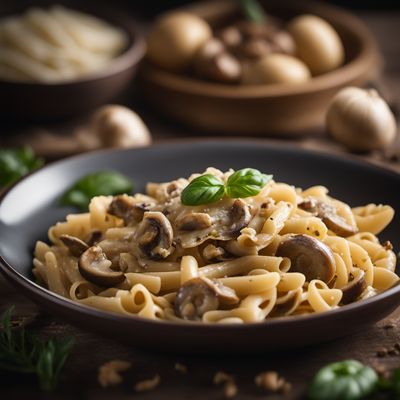
Ingredient
Lasagna
The Layered Italian Delight
Lasagna is a beloved Italian dish that consists of alternating layers of wide pasta sheets, meat or vegetable fillings, tomato sauce, and cheese. The layers are then baked until golden and bubbly, resulting in a comforting and indulgent dish. Lasagna can be customized with various ingredients, making it a versatile option for both meat lovers and vegetarians.
Origins and history
Lasagna has its roots in ancient Greece, where layered dishes similar to modern-day lasagna were prepared. However, it was the Italians who perfected the recipe and made it a staple of their cuisine. The word 'lasagna' originally referred to the pot in which the dish was cooked, but over time, it came to represent the dish itself. Today, lasagna is enjoyed worldwide and has become a symbol of Italian comfort food.
Nutritional information
Lasagna is a rich and indulgent dish that is typically high in calories and fat. However, it also provides a good amount of protein, carbohydrates, and essential nutrients. The nutritional content of lasagna can vary depending on the ingredients used, but it often includes meat, cheese, pasta, and vegetables, offering a balanced combination of macronutrients.
Allergens
Lasagna may contain allergens such as wheat (gluten), dairy (cheese), and eggs, depending on the recipe. Individuals with gluten or lactose intolerance should opt for gluten-free lasagna noodles and dairy-free cheese alternatives to accommodate their dietary needs.
How to select
When selecting lasagna ingredients, choose high-quality pasta sheets that are thick and sturdy enough to hold the layers together. Look for fresh or canned tomatoes for the sauce, opting for San Marzano tomatoes for an authentic flavor. Use a combination of flavorful cheeses such as mozzarella, Parmesan, and ricotta for a rich and creamy texture.
Storage recommendations
To store leftover lasagna, cover the dish tightly with aluminum foil or transfer individual portions to airtight containers. Refrigerate for up to 3-4 days. Lasagna can also be frozen for longer storage. Wrap the dish tightly in plastic wrap and aluminum foil, or use freezer-safe containers. Frozen lasagna can be stored for up to 3 months. Thaw in the refrigerator before reheating.
How to produce
Lasagna is typically prepared using a traditional recipe that involves layering cooked pasta sheets with meat or vegetable fillings, tomato sauce, and cheese. However, it can be adapted to suit individual preferences by incorporating different ingredients or variations of the classic recipe. With a little practice, anyone can master the art of making lasagna at home.
Preparation tips
Lasagna can be prepared in various ways, including classic meat lasagna, vegetarian lasagna, seafood lasagna, or even dessert lasagna. It can be baked in the oven, cooked in a slow cooker, or made in individual portions for a twist on the traditional dish. Serve with a side salad and crusty bread for a complete meal.
Culinary uses
Lasagna is a versatile dish that can be enjoyed as a main course or as part of a buffet spread. It is commonly served at family gatherings, holidays, and special occasions. Lasagna is also a popular choice in Italian restaurants and is often featured on menus around the world.
Availability
Lasagna is available in most Italian restaurants and pizzerias worldwide. It is also commonly found in frozen food sections of grocery stores and supermarkets. Additionally, the ingredients needed to make lasagna from scratch are widely available in most countries.
More ingredients from this category

Pasta, cooked, with mixed sauce
The Classic Comfort: Pasta with Mixed Sauce

Pasta, cooked, with vegetables
A Wholesome Delight: Pasta Infused with Vibrant Vegetables

Pasta, cooked, with vegetables and cheese/cream
Creamy Delight with Pasta and Veggies

Pasta, cooked, with cheese/cream
Indulgent Creamy Pasta Delight

Pasta, cooked, with mushroom sauce
The Savory Delight: Pasta with Mushroom Sauce